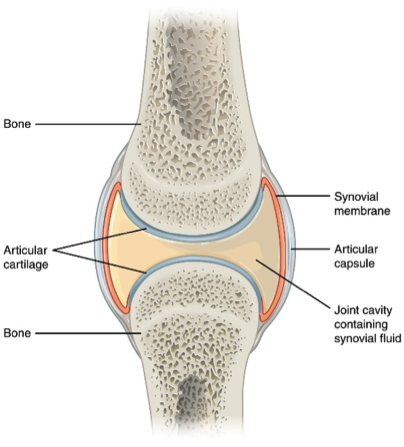As a chiropractor, I often get labeled as a professional “bone cracker”.
What people are referring to is joint manipulation – typically spinal manipulative therapy (SMT). In order to perform this, a patient is set up appropriately and a high velocity (fast), low amplitude (gentle/shallow) thrust is delivered to the joint. When performed, often an audible “pop” can be both heard and felt by the patient. Why the noise? And what does this mean?
First we must start with the anatomy of the joint. This sound indicates a process called “cavitation” which only occurs in synovial joints. Synovial joints are the most common joints in the body, and consist of cartilage covered bone surfaces, sealed by a joint capsule, with a joint cavity filled with synovial fluid.1
For years there were different theories of why this happens and whether or not it was good for you. In 2015 we found out where exactly that popping sound came from. At the University of Alberta, a research team led by Dr. Greg Kawchuk used MRI video to determine why joints make a popping sound when they crack.2 They determined that when those joints were opened up (pulling on finger, SMT etc), dissolved gasses were released from the synovial fluid in the joint due to pressure differences within the joint. When delivered to the spine, there can be many audible cavitations, as there are many joints in the spine.
To answer the question if knuckle cracking is bad for your knuckles and causes arthritis – the answer is no. Many studies have been done and to the best of our knowledge cracking your knuckles is not associated with clinical or radiographic evidence of osteoarthritis.3 In one case report, a researcher and physician cracked only the knuckles of his left hand, twice a day, for 50 years. At the end of this 50 years there was no arthritis in either hand and no visible differences between the two.4
In conclusion, if it feels good for you to crack your knuckles – go right ahead.
Also, more accurately, I would be a “joint cracker” – which is only partly true. Joint manipulation is only one of the many things (soft tissue therapy, rehabilitative exercise, injury education etc) I utilize to help my patients move and feel better.
References
- Synovial Joints. (n.d.). Retrieved from Anatomy and Physiology: http://philschatz.com/anatomy-book/contents/m46394.html
- Pull My Finger: Why Joints Crack. (n.d.). Retrieved from YouTube: https://www.youtube.com/watch?v=BHEcQluSzmM
- Powers, & Kelsberg. (2016). Does knuckle popping lead to arthritis. Journal of Family Practice.
- (1998). Does knuckle cracking lead to arthritis of the fingers? Journal of Arthritis and Rheumatology.



